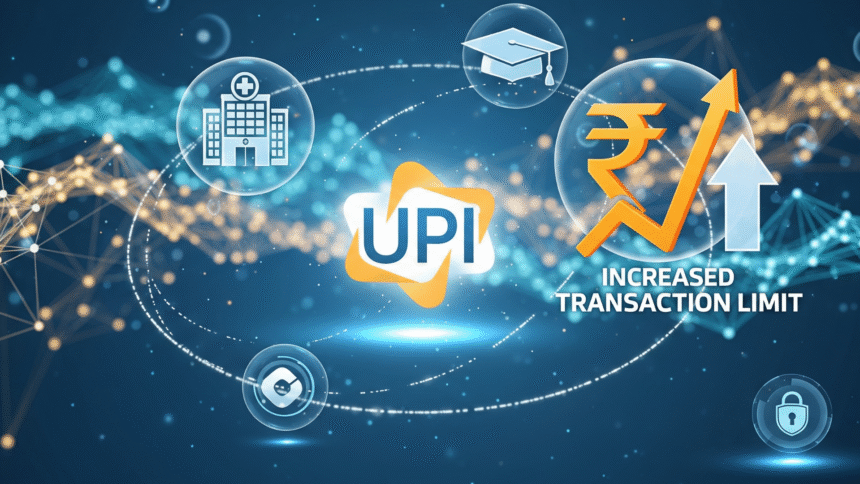New Delhi: In a revolutionary move for India’s digital payment ecosystem, a new rule effective from September 15, 2025, has enhanced the transaction limit for specific Unified Payments Interface (UPI) payments to ₹10 lakh. According to a report by The Economic Times, the National Payments Corporation of India (NPCI) has taken this step following an earlier announcement by the Reserve Bank of India (RBI), aiming to simplify high-value transactions for the public.
What is the New Rule and Who Benefits?
Until now, the general UPI transaction limit ranged from ₹1 lakh to ₹2 lakh (depending on the bank), which often caused inconvenience for users making large payments for critical services like hospital bills or college fees. To address this challenge, NPCI has increased the limit to ₹10 lakh for Person-to-Merchant (P2M) transactions in the following categories:
- Hospitals and Healthcare Services
- Educational Institutions
This means users can now pay their child’s college tuition or settle a large hospital bill in a single, seamless UPI transaction.
Why Was This Change Necessary?
The primary objective of this enhancement is to make digital payments more convenient and eliminate the dependency on traditional methods like cash or Demand Drafts (DD). Previously, users had to go through the cumbersome process of withdrawing large amounts of cash or visiting a bank to get a DD made. This new rule will not only save time for the common person but also expedite the settlement process for merchants and institutions.
A Digital Dream or a Fraudster’s Jackpot?
While this new facility makes the Digital India dream more tangible, it has also raised serious security concerns. As highlighted in the video report, UPI fraud cases are on a sharp rise.
- According to official RBI data, more than 1.3 lakh cases of UPI fraud were reported in the year 2024, leading to a staggering loss of over ₹1200 crore.
- A single transaction limit of ₹10 lakh could be a “jackpot” for online fraudsters and scammers, increasing the risk of users losing a significant amount of money in one go.
What Are NPCI and Banks Doing to Ensure Safety?
NPCI has assured that with the increased limit, security measures have been significantly beefed up. These include stronger encryption, real-time fraud detection systems, and AI-based security layers. However, the real challenge lies with the banks to rapidly upgrade their own systems, as many are still lagging in implementing such advanced security protocols.
Conclusion
UPI is no longer just a tool for small, everyday expenses; it is now ready to handle some of your life’s biggest bills. This move is a milestone in establishing India’s digital economy on the global stage. However, the true success of this facility will depend on whether NPCI and the banks can collectively win the trust of their users. The most critical question remains: are we, as users, ready to trust a single tap with our life’s savings?



















